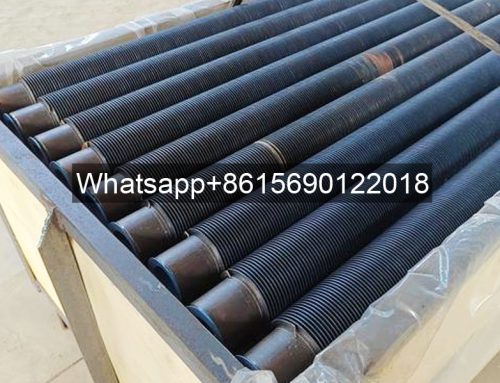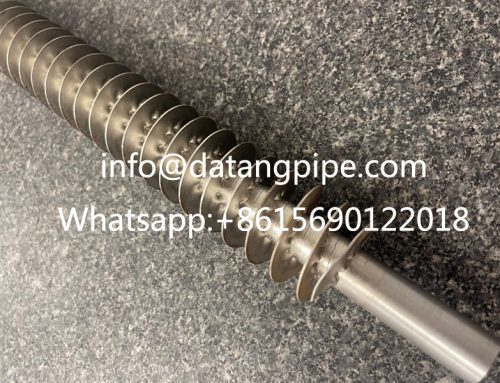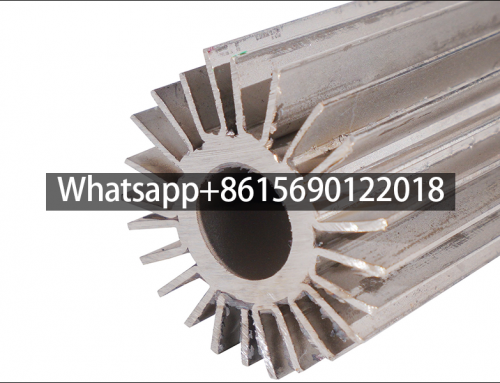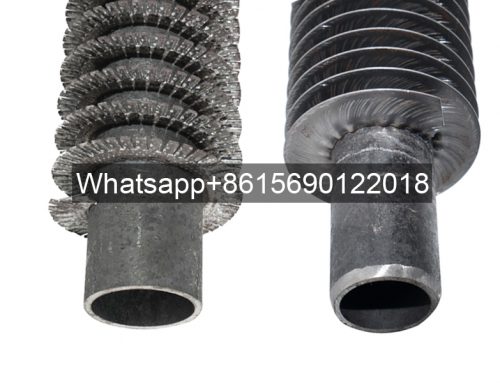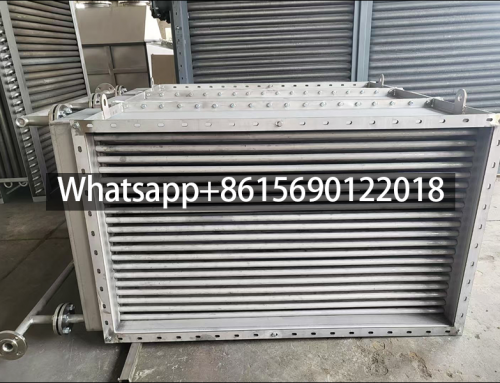How to Ensure the Corrosion Resistance of Steel Finned Tubes?
To ensure the corrosion resistance of steel finned tubes, it is necessary to study the material, surface treatment, manufacturing process and operating environment.
1. Material optimization of steel finned tubes
Selection of high-quality steel: The basis for ensuring the corrosion resistance of steel finned tubes is the selection of high-quality steel. Steel with moderate carbon content not only ensures mechanical strength, but also takes into account corrosion resistance.
For example, some low-alloy steels contain alloy elements such as chromium and nickel, which can form a dense oxide film on the surface of steel, effectively isolating oxygen and moisture, and preventing further corrosion. This inherent material property lays the foundation for corrosion resistance from the source.
Control impurity content: Impurities in steel, such as sulfur and phosphorus, will reduce its corrosion resistance. In the production process, it is crucial to strictly control the impurity content. Advanced smelting technology can accurately remove impurities and improve the purity of steel. The uniform structure of pure steel reduces local corrosion caused by impurities and improves overall corrosion resistance.
2. Surface treatment technology of steel finned tubes
Hot-dip galvanizing: Immerse the steel finned tube in molten zinc liquid to form a zinc layer on its surface. Zinc has an active chemical property and reacts preferentially with oxygen in the air to form a zinc oxide film. This film is like a solid shield that protects the steel from corrosion. Moreover, even if the zinc layer is partially damaged, the surrounding zinc can still protect the exposed steel through electrochemical action to prevent the spread of corrosion.
Anti-corrosion coating: Anti-corrosion coatings such as epoxy resin coatings and polyurethane coatings are applied to the surface of steel finned tubes to effectively isolate external corrosive media. These coatings have good chemical stability and physical properties and can resist the erosion of chemicals such as acids, alkalis, and salts. At the same time, the density and adhesion of the coating are crucial to ensure that it does not fall off or peel during long-term use and continues to play an anti-corrosion role.
3. Control of the manufacturing process of steel finned tubes
Optimization of welding process: Welding is a key link in the manufacture of steel finned tubes, and the quality of welding affects corrosion resistance. The use of advanced welding processes, such as argon arc welding, can ensure the quality of welds and reduce welding defects. Welding defects, such as pores and slag inclusions, will become the starting point of corrosion and accelerate the corrosion process. Optimizing the welding process to ensure that the weld is uniform and dense, and closely combined with the parent material can reduce the risk of corrosion.
Fin and base tube connection treatment: The connection between the fin and the base tube is prone to corrosion due to stress concentration and the presence of gaps. Through reasonable connection methods, such as high-frequency welding, the fin and the base tube are firmly combined to reduce gaps. At the same time, special treatment is performed on the connection parts, such as polishing to eliminate stress concentration points, avoid coating damage due to excessive local stress, and thus enhance the corrosion resistance of this part.
4. Operating environment control of steel finned tubes
Control medium composition: During use, the composition of the heat medium or working medium has a significant effect on the corrosion of steel finned tubes.
For example, in a system with water as the heat medium, it is crucial to control the dissolved oxygen, pH and chloride ion content in the water. Excessive dissolved oxygen will accelerate the oxygen absorption corrosion of steel, while water with strong acidity or alkalinity and water with high chloride ion content will aggravate corrosion. Adjusting the medium composition through water treatment measures such as softening and deoxygenation can reduce the corrosion rate.
Temperature and humidity management: Ambient temperature and humidity are also important factors affecting corrosion. High temperature and high humidity environment will accelerate the corrosion process. Whenever possible, control the temperature and humidity of the operating environment of the steel finned tube to avoid it being in a temperature and humidity range prone to corrosion.


